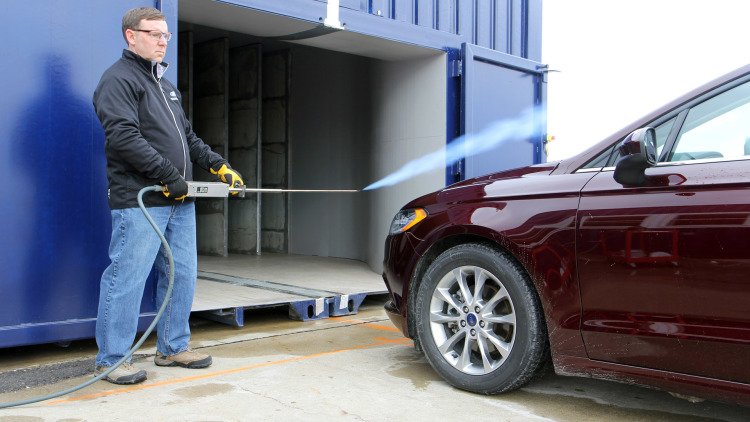Ford Built A Mobile Wind Tunnel From Shipping Containers

But there aren't a lot of wind tunnels floating around, nor are they particularly easy for engineers to score time in. That's why Ford will start bringing a wind tunnel to its factories.
The mobile wind tunnel isn't actually a tunnel in the way we usually envision them. It's built from two 53-foot shipping containers that enclose only the ducts, vanes, and a pair of six-foot, 16-blade fans, each powered by a 250-horsepower electric motor. An opening in one of the containers – Ford refers to it as the nozzle end of the setup – sends winds at up to 80 miles per hour onto a car parked outside. The patent-pending rig takes only six hours to set up and can be torn back down in less than a day, allowing Ford to rapidly deploy it to different factories.
But what's the point of a mobile wind tunnel? Surely a couple of cargo containers can't replace a full-size wind tunnel, right? The new mobile system will focus on identifying wind-noise problems in the cabins of early production models. It's not designed to make substantive aerodynamic finds – that has to be done far earlier in the process and is what the big, fixed tunnels are for.
Shipping the mobile wind tunnel to different factories allows the engineers to test multiple vehicles as they come off the production line without having to put them on a truck and ship them to an actual tunnel. By running as many early-production cars through the portable tunnel as they want, engineers will be able to more quickly identify wind-noise issues, and since they're at the factory, they can test changes in the production process almost immediately.
Ford's mobile wind tunnel has its first assignment at the company's Flat Rock, MI, assembly plant. It's shown in the video and gallery above being used on a 2017 Ford Fusion, which is assembled at the plant alongside the Mustang.



Related News


